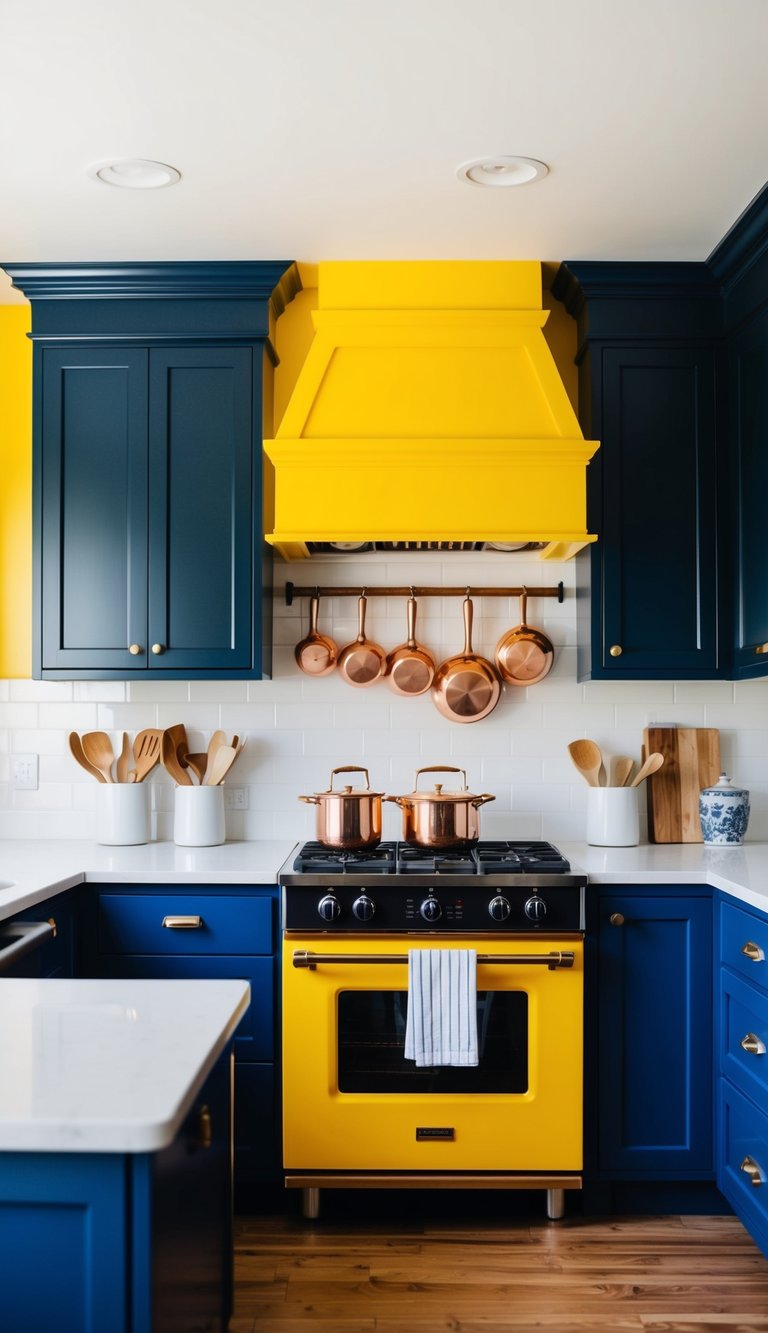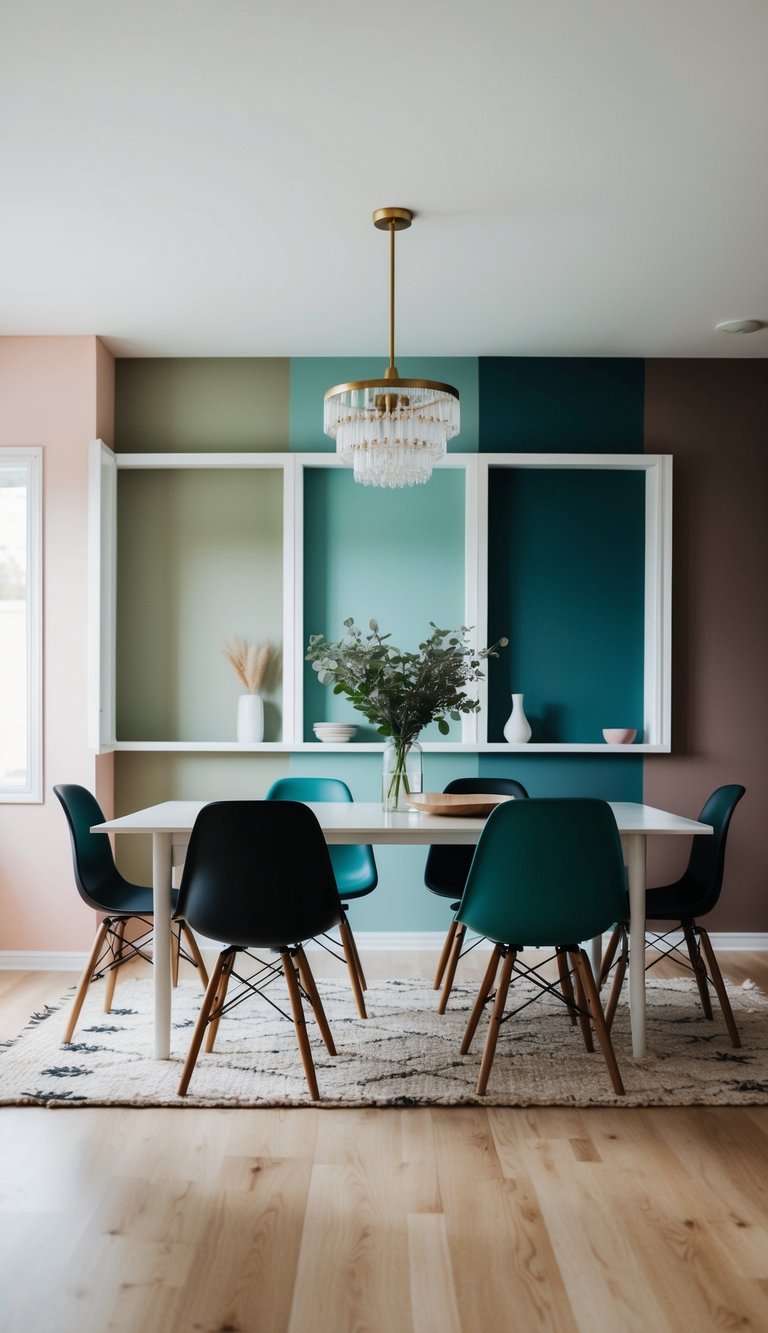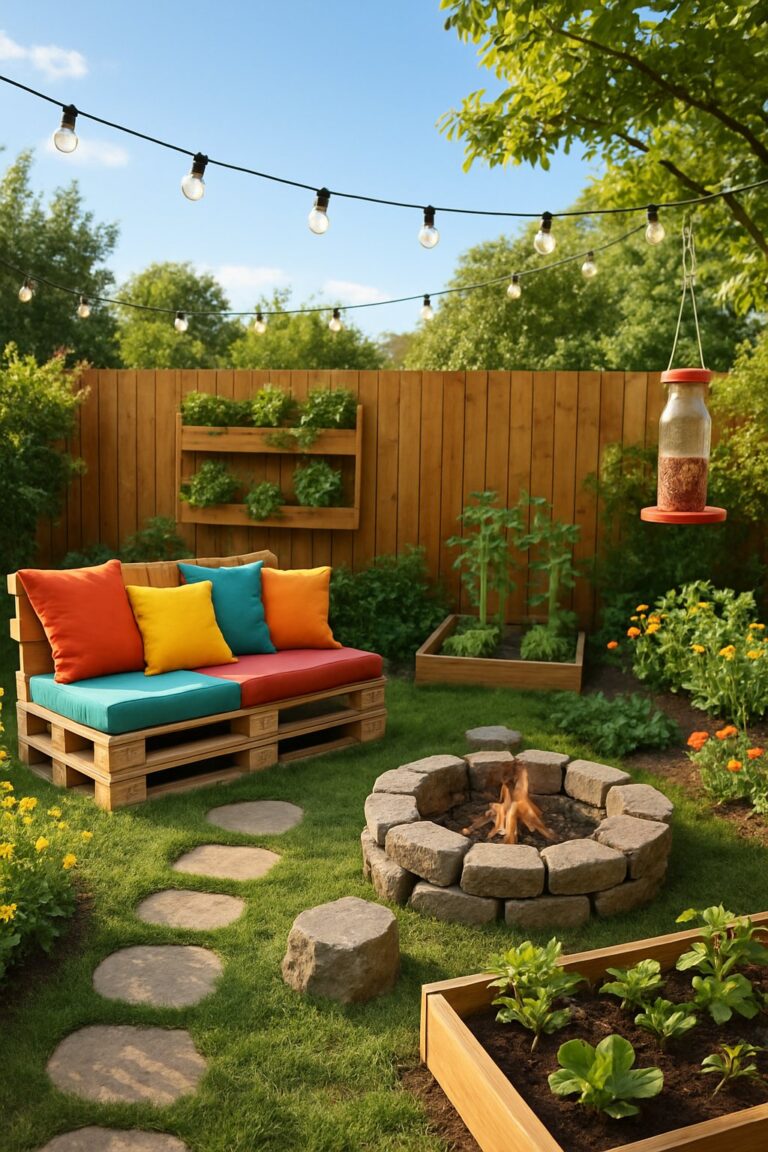If you are searching for ways to make your home safer and more comfortable, these mudroom entry ideas for seniors are here to help. A well-designed mudroom can make daily routines easier, reduce the risk of falls, and support your independence at home.
Whether you are aging in place or helping a loved one, small changes can make a big difference. You deserve spaces that work for you—not against you.
1) Install a sturdy bench with built-in storage for easy seating and shoe organization.
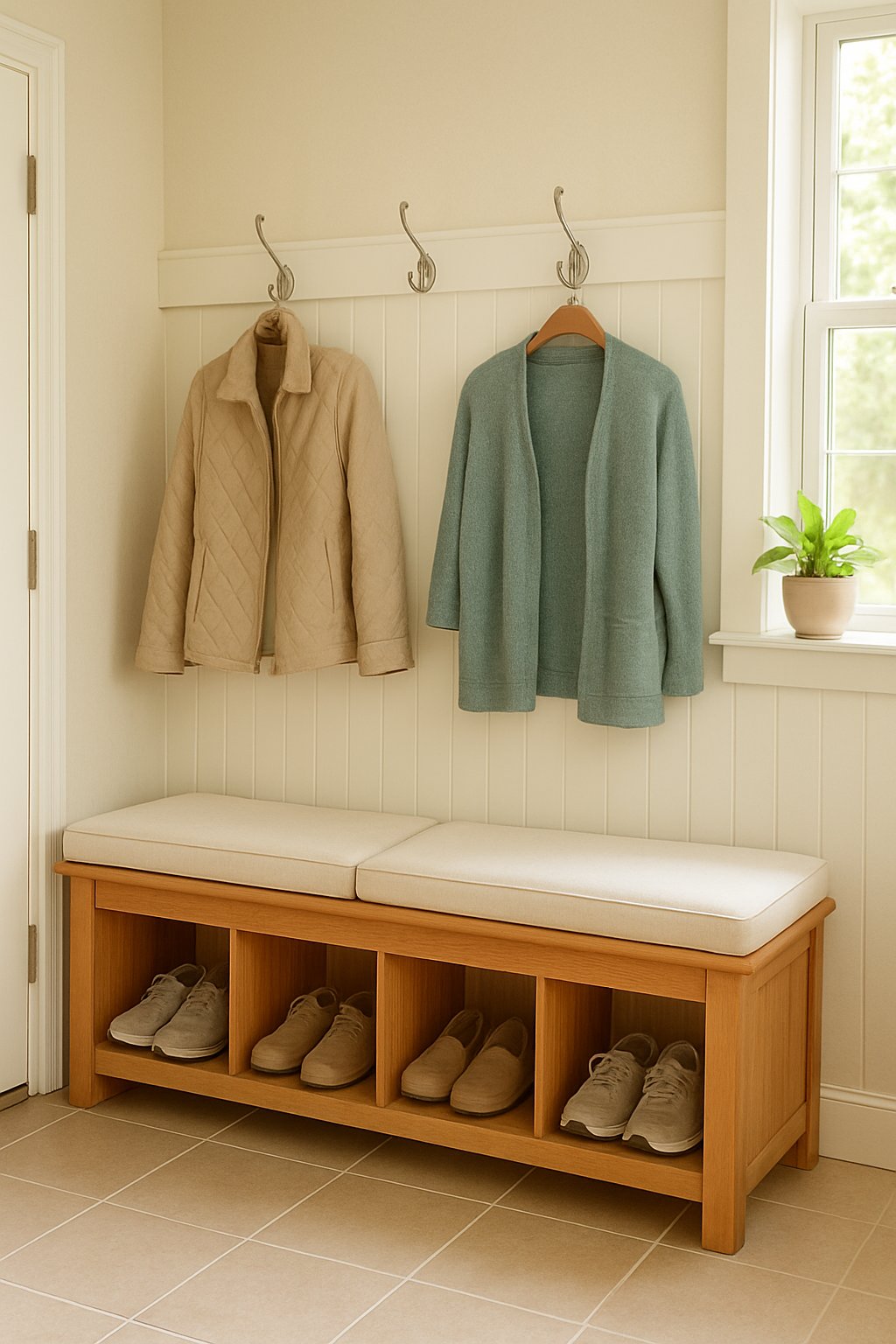
A sturdy bench makes it safer and easier to sit while putting on or taking off your shoes. Having a stable, comfortable place to rest can help you feel more confident when coming and going.
Look for a bench with built-in storage underneath. Cubbies or baskets are helpful for keeping shoes tidy and close by, so you don’t have to bend down or search for them. You might also use these storage spots for hats, gloves, or other small items you use often.
Choose a bench with enough height so you can sit and stand up easily. Some benches have soft cushions for extra comfort, which can make a big difference for your joints and back.
A bench with a backrest adds a little more support if you want to sit longer or feel steadier. Placing the bench near the doorway means you can put on your shoes right before you leave and take them off as soon as you come inside. This simple upgrade can help make daily routines safer and a little more pleasant.
2) Add wall-mounted coat hooks at a reachable height for coats and bags.
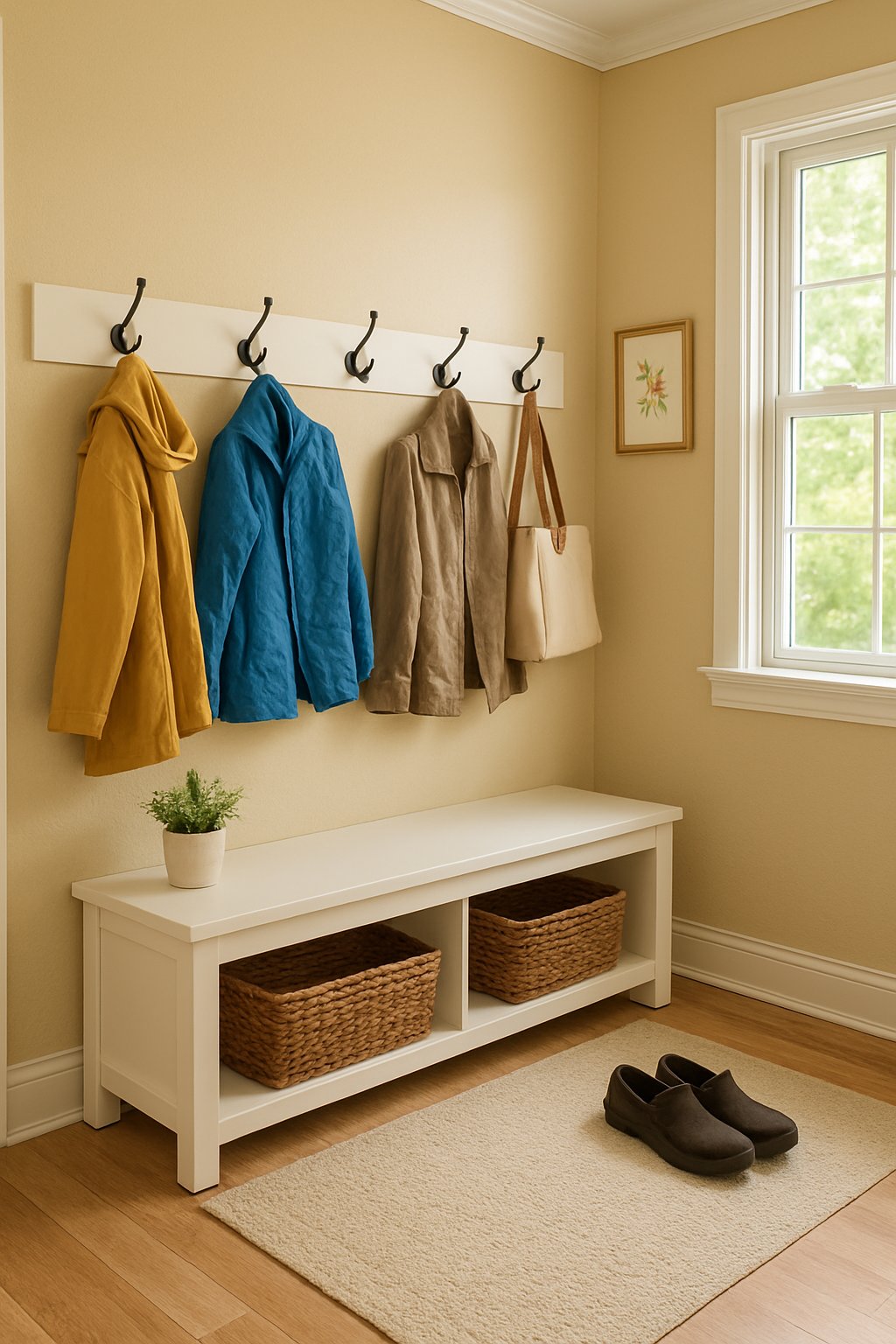
Wall-mounted coat hooks make it much easier to keep track of your jackets, bags, and hats. They help keep your mudroom neat and prevent items from piling up on chairs or tables.
For easy use, make sure the hooks are installed at a height that’s comfortable for you to reach. Most people find that between 48 and 54 inches from the floor is best. This way, you won’t have to stretch or bend too much.
Spacing hooks about 12 to 18 inches apart gives each coat or bag enough room. It also keeps items from getting tangled or crowded, so everything is easy to see and grab.
Choose sturdy hooks with a wide base. This helps them hold heavier items like winter coats or purses without slipping. Look for smooth edges, as these are gentler on hands and sleeves.
Placing hooks at your preferred height means you can hang up and grab your things without extra effort. This promotes independence and can help make daily routines feel smoother.
3) Use non-slip rugs or mats to prevent slipping near the entryway.

Keeping your entryway safe starts with the right flooring. Placing non-slip rugs or mats by your door can make a big difference in reducing falls. These mats are made to grip the floor, so they stay in place even if your shoes are wet.
Look for rugs or mats with a textured, rubber backing. This helps keep them from sliding when you step on them. Bright colors or patterns can also make the area easier to see, especially if you have trouble with your vision.
Choose a mat that is thin but sturdy. Thick mats can be a tripping hazard. Washable mats are also a good option so you can keep your space clean and safe.
You might want to place non-slip mats inside and outside your door, especially if your entryway often gets wet from rain or snow. This extra step can give you more confidence each time you come and go from your home.
Taking small actions like this can help you stay steady on your feet and feel more secure every day.
4) Incorporate soft, warm lighting to brighten the mudroom safely.

Good lighting makes your mudroom much safer and easier to use, especially if you have trouble seeing in dim spaces. Soft, warm lights (like bulbs marked “2700K” to “3000K”) create a gentle glow. This type of lighting helps you move around with confidence and reduces harsh shadows that can hide steps or items on the floor.
Try using overhead fixtures such as ceiling lights or a lantern-style light for a warm, welcoming feel. If you have shelves or cabinets, consider adding small strip lights or under-cabinet lighting. These are easy to install and can help brighten dark corners.
Light switches should be easy to reach, and it’s helpful to have them close to the doorway. For even more convenience, you might like motion-sensor lights that turn on automatically when you enter the room. This means you never need to fumble for a switch with your hands full.
Choose lighting that is bright enough but gentle on your eyes. This balance helps prevent glare while making sure you see everything you need. Good lighting in your mudroom can make everyday routines feel safer and more comfortable.
5) Choose wide, clear paths that accommodate walkers or canes comfortably.
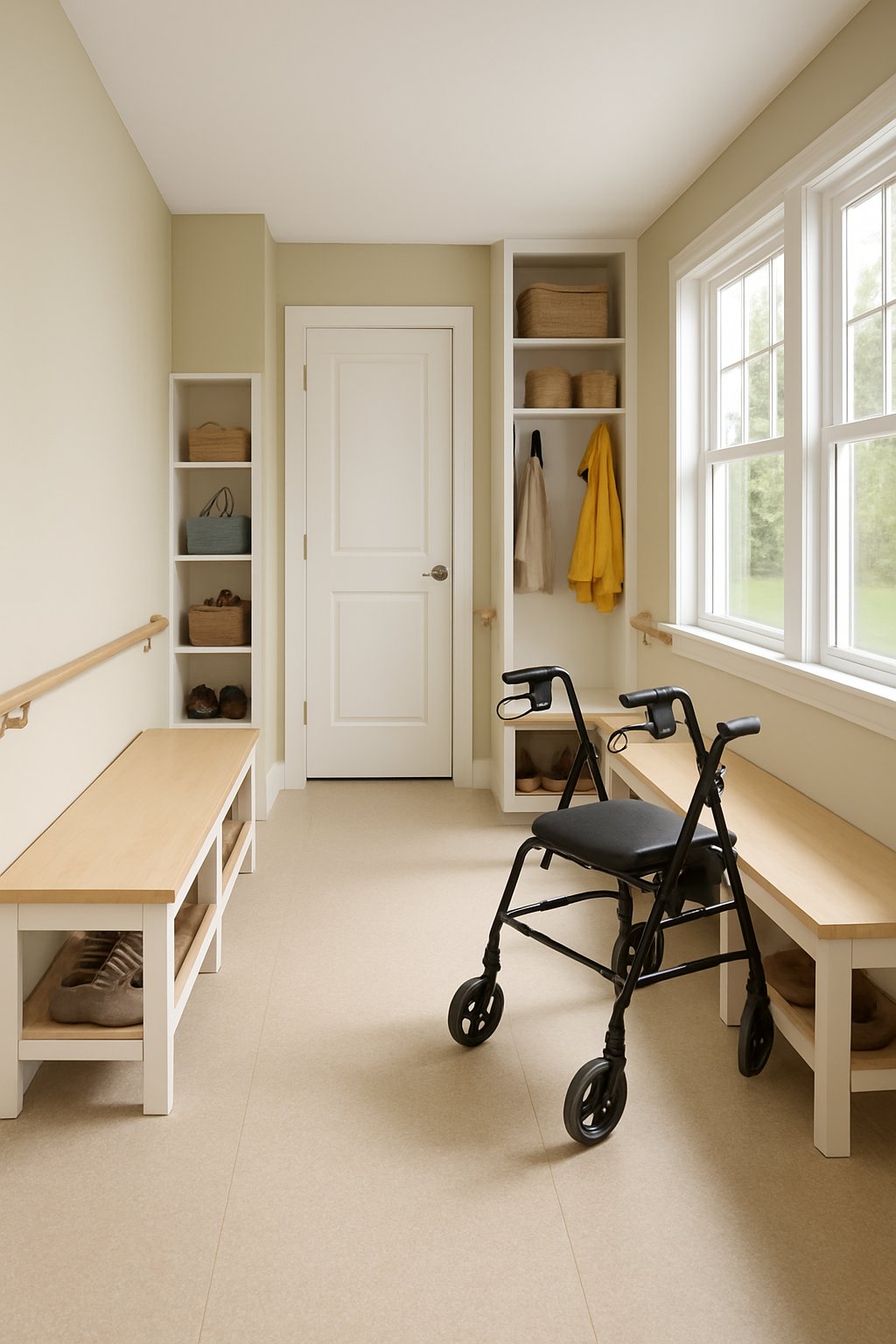
When moving through your mudroom, it’s important to have enough space to walk freely—especially if you use a walker or cane. Wide paths make it easier to turn, steady yourself, and avoid bumping into furniture or walls.
Aim for a walkway that’s at least three feet wide. If you have the space, four feet is even better, especially if two people need to walk side-by-side.
Clear away shoes, baskets, and clutter from these paths. A clean, open walkway helps prevent trips or falls and makes your entryway feel more open and welcoming.
If possible, choose flooring with a smooth, non-slip surface, so walkers or canes move easily. Add bright lighting to each pathway to make sure you can see every step clearly.
Simple changes like these help you feel more confident and safe when coming and going from your home.
6) Include a raised shoe rack to avoid bending too low when putting on shoes.
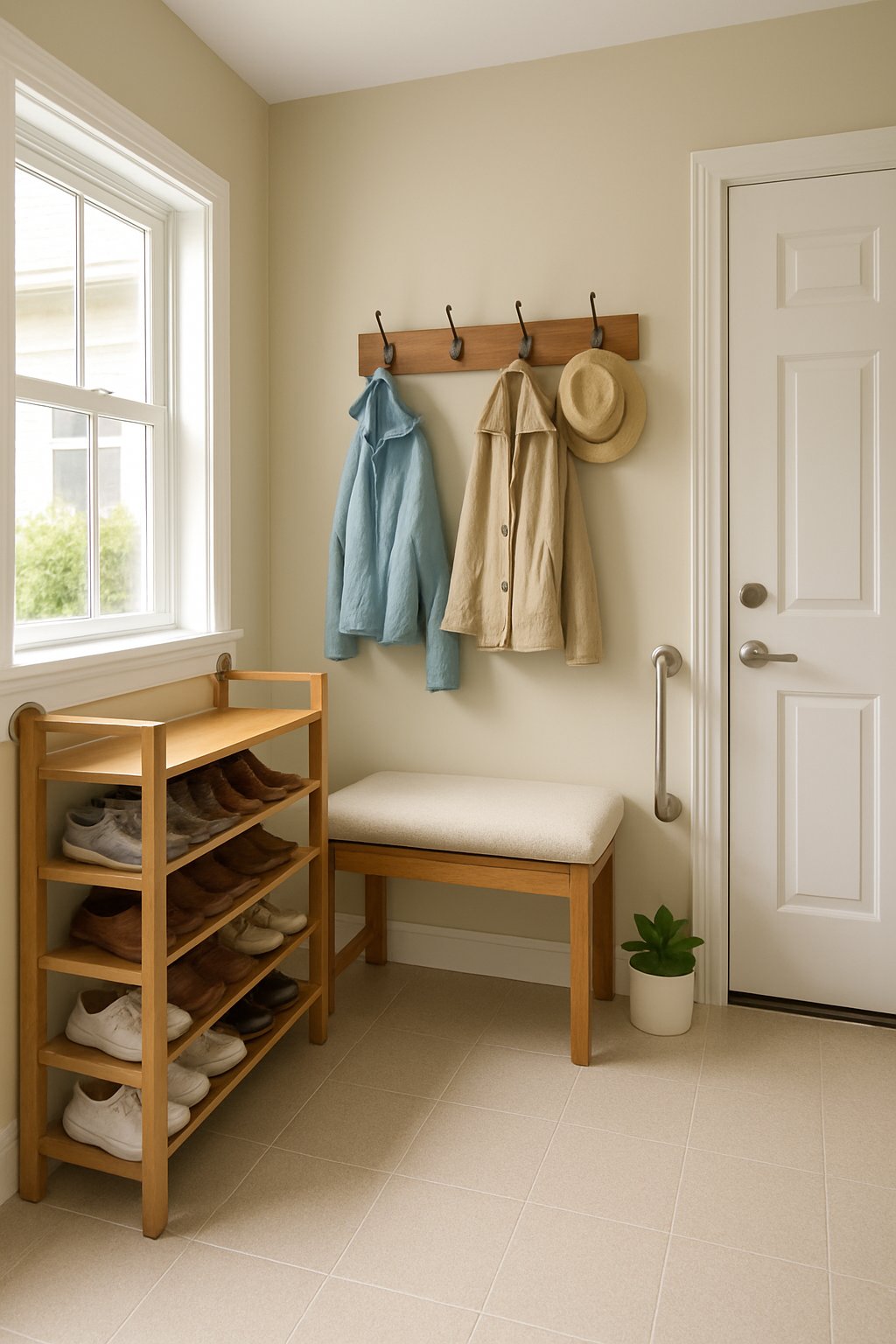
A raised shoe rack can make your entryway more comfortable and safe. When your shoes are stored at a higher level, you don’t have to bend down as much to reach them. This is especially helpful if it’s hard for you to bend or kneel.
Look for a shoe rack that is sturdy and easy to reach from a standing or seated position. You could place the rack near a bench or chair, so you can sit while putting on your shoes. This simple setup can help prevent slips or strain on your back.
Choose a rack height that feels right for you—usually around chair height works well. Some shoe racks are adjustable, so you can change the height if needed. Make sure the rack is stable and doesn’t wobble when you use it.
You can also pair your shoe rack with a tray underneath to catch dirt or water. This keeps your floor clean and dry, making your entryway safer and easier to maintain. A raised shoe rack can make daily routines smoother and a bit brighter.
7) Add a wall mirror for easy grooming checks before heading out.

Placing a mirror on your mudroom wall can make your life a little easier. With a quick glance, you can check your hair, fix your collar, or see if your glasses are straight before leaving home.
Choose a mirror size that fits well in your space and is easy for you to see into. Larger mirrors can also help brighten up the room by reflecting light, making it feel more open and inviting.
If space allows, try hanging the mirror at a height that’s comfortable for you. Some people prefer a round mirror for a softer look, while others may like something simple with a sturdy frame.
Adding a small bench or shelf near the mirror can give you a place to set down your bag or wallet as you get ready. Keep the area tidy so it stays easy to use.
A well-placed mirror can help you feel more confident as you step out for the day. It’s a simple touch that adds both function and comfort to your mudroom.
8) Use cubbies with labels to keep personal items organized and accessible.
Cubbies can make it much easier to find what you need when heading out or coming home. Having a separate spot for shoes, hats, gloves, or keys cuts down on confusion. You won’t have to remember where things are—everything will have its home.
Adding labels to each cubby helps keep your entry tidy and reduces any guesswork. You can use large, easy-to-read labels so you don’t have trouble finding things. For families or couples, labeling can mean no more mix-ups or missing items.
If bending is a challenge, choose cubby shelves that are at a comfortable height. This keeps your must-have items within easy reach and helps prevent accidents. Using lightweight bins or baskets inside the cubbies can also make it easier to carry things.
Cubbies can be mounted on the wall or set on the floor, depending on your space. Placing them near the door means you can quickly store or grab what you need, making everyday routines simpler and more comfortable for you.
9) Place a small shelf near the door for keys, glasses, or mail.
A small shelf by the door can help you keep important items in one easy-to-reach place. Set your keys, glasses, or mail there so you never have to search the house for them again. Even a slim, floating shelf works well and takes up very little space.
Think about mounting the shelf at a comfortable height. You should be able to reach it easily, whether standing or sitting. If you use a mobility aid, double-check that the shelf doesn’t block your path.
Choose a shelf with a smooth surface and rounded edges for safety. Add a small basket or tray on top to keep everything neat and easy to grab. Hooks under the shelf can hold a cane, hat, or reusable shopping bag.
Keeping daily items by the door helps you stay organized and get out the door more confidently. This simple change can make daily routines easier and less stressful.
10) Opt for lever-style door handles that are easier to use than knobs.
Switching to lever-style door handles can make coming and going much simpler. Levers need only a gentle push or pull, not a twist of the wrist. This is helpful if your grip isn’t as strong as it once was or if you have joint pain.
Knobs can be slippery and tough to twist, especially for those with arthritis. Levers, on the other hand, offer a larger grip area. You can even open them with an elbow if your hands are full.
Lever handles are also easier for anyone who uses a cane or walker. They add a bit of extra convenience and make your mudroom safer. Modern lever styles come in many shapes and finishes, so you can find one that matches your home’s look.
Making this change may seem small, but it can have a big impact on your day-to-day comfort and independence. It’s an easy way to help your mudroom entry feel welcoming and safe for everyone.
Designing a Safe and Welcoming Mudroom
You deserve a mudroom that feels safe and comforting every time you step inside. By focusing on good lighting, slip-free floors, and a cozy place to sit, you can turn your entryway into a warm spot that makes daily life easier.
Lighting for Better Visibility
Bright, even lighting is one of the best ways to prevent trips and falls, especially in spaces where shoes and bags may clutter the floor. Use motion-sensor lights so you never have to fumble for a switch. These lights turn on automatically when you walk in, offering immediate visibility.
Lamp options can include overhead lighting, wall sconces, or even LED strip lights under shelves. It’s a good idea to layer your lighting, combining general overhead lights with softer side lights. This helps reduce sharp shadows and makes it easier to see what’s on the floor.
If your mudroom has any natural light from windows or a glass door, use light curtains that let sunlight in but protect your privacy. Brightening up the space can make it feel more welcoming and help you spot any hazards before you step on them.
Non-Slip Flooring Solutions
Flooring in your mudroom needs to be easy to walk on, no matter the weather. Wet shoes and boots can leave puddles, so you want a floor that won’t get slippery. Choose non-slip tiles or vinyl with textured finishes. These materials stand up to water and dirt and are simple to keep clean.
Place a sturdy doormat both outside and inside the door. This stops most mud and water from getting on your floors. You can also use rubber-backed area rugs for extra grip, but make sure the edges don’t curl up.
Avoid slick surfaces like polished stone or shiny tiles, and skip small scatter rugs that can slide out from under you. Instead, look for flooring that is both gentle on your feet and secure.
Comfortable Seating Options
A strong, supportive bench makes it easier to sit down while taking off your shoes or boots. Choose a bench with a backrest and armrests for added support. This can give you more confidence as you move from standing to sitting and back again.
Benches with built-in storage are especially helpful. You can keep shoes, hats, or gloves close by and shelves reduce clutter. For softer seating, add a cushion that is firm and fixed in place so it doesn’t slip.
Place the bench near the door so you don’t have to walk far before you can sit down. Pair it with wall hooks at a comfortable height for your coat or bag. This way, you can sit, hang your things, and get ready to head out—all from one spot.
Maintaining Independence and Organization
Keeping your mudroom both organized and easy to use helps you stay confident and independent in your daily life. Smart storage and thoughtful layout can make it safer and easier to get what you need, when you need it.
Easy-Reach Storage Ideas
Having your essentials within arm’s reach can help you move about safely. For storage, look for shelves and cabinets set at a comfortable height. Avoid overhead bins that require stretching or climbing.
Baskets or bins are a great way to keep gloves, hats, and keys together. Choose heavier baskets with handles for easier lifting and carrying. Labeling each container with large, clear text can help you find things quickly.
A small bench with pull-out drawers or a shelf underneath offers a place to sit and store items close to the ground. Hooks mounted at chest height are easy to reach for hanging bags or umbrellas.
If possible, install a narrow table or shelf by your door for items like mail or a flashlight. This keeps your most-used items visible and accessible every day.
Accessible Shoe and Coat Racks
Shoes and coats are used daily, so they should be easy to grab and put away. A low, sturdy shoe rack keeps your footwear organized and reduces the need to bend or reach far. Choose a rack with non-slip surfaces for extra safety.
Coat racks with wide hooks at shoulder or waist height are easier to use than high pegs. Wall-mounted racks with bright labels can help you remember where everything goes. If space allows, a padded bench next to the rack can give you extra support when putting on or taking off shoes.
Avoid tall, free-standing coat trees that can tip over. Instead, look for stable racks that attach securely to the wall or sit firmly on the floor. Always keep walking paths clear to help prevent trips and falls.


